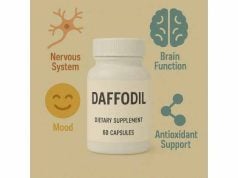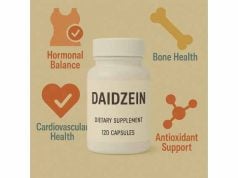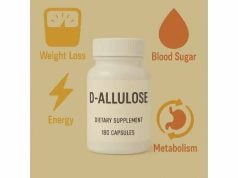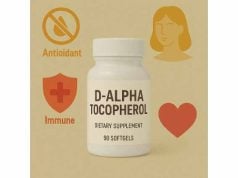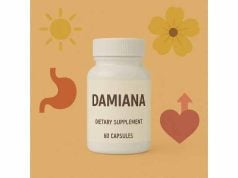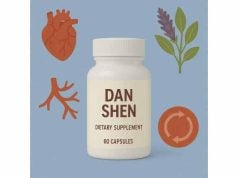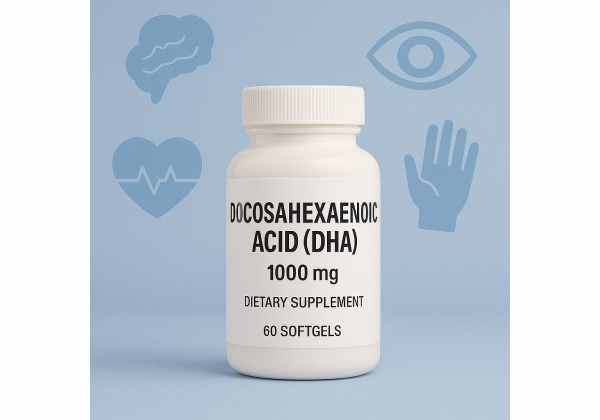
Docosahexaenoic acid (DHA) is a long-chain omega-3 fat that your body uses to build cell membranes—especially in the brain and retina—and to make signaling molecules that help resolve inflammation. Because adults convert only small amounts of plant omega-3 (ALA) into DHA, levels depend mostly on dietary intake from fish, seafood, and algae, or from supplements. Research links adequate DHA to healthy pregnancy outcomes, triglyceride reduction (when used in prescription-strength combinations), and possible cognitive support in specific groups. At common supplemental intakes, DHA is well tolerated; at higher doses, the risk profile changes and should be managed with medical guidance. This guide explains what DHA does, where it helps (and where evidence is mixed), how to choose and use it, sensible dosage ranges, and who should avoid or take extra care.
Top DHA Highlights at a Glance
- Supports fetal brain and eye development; in pregnancy, intake typically includes ≥200 mg DHA/day.
- Helps lower triglycerides when used as part of prescription omega-3 therapy (2–4 g/day combined EPA+DHA).
- Typical everyday intake target: 250–500 mg/day combined EPA+DHA; many aim for 200–500 mg/day DHA specifically.
- Safety note: high daily doses of omega-3s may raise atrial fibrillation risk in some; discuss with your clinician.
- Avoid fish-derived oils if you have fish or shellfish allergy; people on anticoagulants or with bleeding disorders should seek medical advice first.
Table of Contents
- What is DHA and how it works
- Does DHA really help? Evidence-based benefits
- How much DHA per day?
- Best forms and sources of DHA
- Side effects, interactions, and who should avoid
- What the evidence says in 2025
What is DHA and how it works
DHA is a 22-carbon, highly unsaturated omega-3 fatty acid (22:6n-3). It is a structural building block of neuronal and retinal cell membranes, where it enriches phospholipids and influences membrane fluidity, receptor function, ion channels, and neurotransmission. In plain terms, DHA helps your cells communicate efficiently. It is particularly concentrated in the gray matter of the brain and the photoreceptor outer segments of the eye. During late pregnancy and early infancy, the brain and retina accrete DHA rapidly, which is why maternal intake and breast milk DHA levels matter.
Unlike essential fatty acids such as alpha-linolenic acid (ALA, 18:3n-3), DHA is not strictly “essential” because the body can synthesize small amounts from ALA via elongation and desaturation. However, this conversion in adults is limited; practical DHA status depends mainly on direct intake from seafood or supplements. That is why global recommendations often frame targets in terms of combined intakes of DHA and EPA (eicosapentaenoic acid), the other marine omega-3.
Beyond structure, DHA contributes to inflammation-resolution signaling. When incorporated into cell membranes, DHA can be enzymatically converted into specialized pro-resolving mediators (SPMs)—protectins, maresins, and certain resolvins—that help turn off inflammatory responses after they have done their job, without broadly suppressing immunity. This “resolve and restore” role helps explain why omega-3s can support cardiovascular and metabolic health even when headline outcomes are mixed.
At the cellular level, DHA modulates gene expression through nuclear receptors (such as PPARs), affects membrane rafts that cluster receptors and signaling proteins, and can influence neurotransmitter systems and myelination. In the liver, formulations containing DHA can reduce triglyceride synthesis and secretion, though DHA may modestly raise LDL-cholesterol in some people while also shifting LDL particle size toward a less atherogenic profile. In the eye, DHA supports phototransduction machinery and membrane renewal; in the brain, it supports synaptogenesis and plasticity.
Dietary patterns shape DHA status. Cold-water fatty fish (e.g., salmon, sardines, mackerel, herring, anchovies) and certain fortified foods provide meaningful amounts. Algal oil offers a vegetarian source of preformed DHA. Because oxidative stability affects quality, high-purity products and proper storage (cool, dark, sealed) help preserve potency and limit off-flavors. Absorption is best with meals that contain fat.
In short, DHA is both a structural component and a signaling substrate: it builds brain and eye tissues and participates in the “clean finish” to inflammation. That dual role underpins much of its clinical relevance across the lifespan.
Does DHA really help? Evidence-based benefits
DHA’s strongest, most consistent benefits appear in pregnancy and early life. Adequate maternal intake of DHA—often alongside EPA—supports healthy gestational length and infant birth weight, with clinical guidance recommending added DHA during pregnancy. Many infant formulas include DHA to approximate breast-milk levels, reflecting its importance for early visual and cognitive development. In practical terms, women of childbearing age are usually advised to achieve a baseline intake of combined EPA+DHA and, once pregnant, to add a defined amount of DHA daily; those with very low baseline intake may require more. Timing matters: guidance often suggests beginning supplementary DHA by the second trimester and continuing until term.
For cardiovascular risk factors, omega-3 therapy demonstrates a clear, dose-responsive reduction in triglycerides. Prescription-strength products delivering 2–4 g/day of omega-3s (EPA alone or EPA+DHA combinations) reliably lower triglycerides. Over-the-counter doses used for general wellness (e.g., a few hundred milligrams) are not expected to have the same pharmacologic effect, though they may support overall omega-3 status. When DHA is included at high dose, some people experience a small rise in LDL-cholesterol, typically with a shift toward larger particle size; whether that change is clinically important depends on the broader risk profile.
Cognitive outcomes are nuanced. Observational research links higher fish or omega-3 intake to lower risk of cognitive decline, and DHA is central to neuronal membrane function. Randomized trials suggest that supplemental DHA may help in specific populations—particularly adults with low baseline status or mild cognitive impairment—while trials in established Alzheimer’s disease generally do not show meaningful benefit. In cognitively healthy adults, large, long-duration trials at modest doses have often shown null effects on global cognitive composites; however, targeted endpoints or subgroups (e.g., genetic profiles, omega-3 index levels) sometimes benefit. The big picture: DHA is necessary for normal brain development and function, but supplementation beyond a balanced diet yields measurable cognitive gains mostly in select scenarios.
Ocular health is another area of interest. DHA is abundant in retinal membranes, and adequate intake supports normal visual function. Evidence for preventing or treating specific eye conditions such as dry eye or age-related macular degeneration is mixed; some studies show symptom relief or structural signals when omega-3s are part of multi-nutrient formulas, while others are inconclusive. As with cognition, baseline status, dose, and formulation influence results.
What about broad cardiovascular endpoints like heart attack or stroke prevention in the general population? Results vary by dose, formulation, and population risk. Some high-dose EPA-only regimens have demonstrated event reduction in high-risk patients; combined EPA+DHA at moderate doses has shown inconsistent effects on hard outcomes. This does not negate triglyceride lowering or the general diet-pattern message: eating fish regularly is consistently associated with cardiovascular benefits.
Finally, immune and inflammatory conditions show heterogeneous responses. Omega-3s may help in rheumatoid arthritis and some inflammatory pathways; in other conditions, results are less consistent. Across outcomes, study quality, dosing, and whether DHA is given alone or with EPA shape the signal.
In sum: the strongest evidence supports added DHA in pregnancy and prescription-strength omega-3 for triglyceride lowering under medical care. Cognitive and eye benefits are context-dependent, and broad cardiovascular event prevention with mixed EPA+DHA at modest doses remains inconsistent.
How much DHA per day?
There is no universally accepted Dietary Reference Intake for DHA alone, but several expert bodies converge on practical ranges for combined EPA+DHA and on specific DHA targets in pregnancy. Here is how to translate that into day-to-day use:
Everyday maintenance (most adults). A common target is 250–500 mg/day of combined EPA+DHA, achievable by eating seafood two or more times per week or by using supplements. If you prefer to focus on DHA specifically, 200–500 mg/day of DHA is a reasonable daily range for general status support, especially for those who eat little or no fish.
Pregnancy and lactation. Clinical guidance typically recommends a baseline of at least 250 mg/day EPA+DHA, plus an additional ≥100–200 mg/day of DHA. Many experts advise ~600–1,000 mg/day of EPA+DHA (or DHA alone) during pregnancy for women starting with low intake or low blood levels, ideally beginning in the second trimester and continuing until about 37 weeks. Because needs and safety considerations vary, discuss personalized dosing with your obstetric clinician.
Triglyceride lowering (medical therapy). For people with high or very high triglycerides, prescription omega-3 therapy at 2–4 g/day (EPA alone or EPA+DHA combinations) is used to reduce triglycerides. This is not a self-care dose; it should be prescribed and monitored by a clinician, because high doses change the risk-benefit profile (see safety section).
Children and teens. Needs depend on age, diet, and health context. Rather than a one-size-fits-all dose, clinicians often aim for regular seafood intake consistent with national guidelines and consider supplemental DHA for specific indications.
Vegetarian or vegan. Algal oil supplies preformed DHA without fish. A daily 200–400 mg DHA from algae is a practical starting point if you eat no seafood; some products also include EPA from algae.
Timing and absorption. Take DHA with a meal that contains fat to improve absorption. Consistency matters more than exact timing (morning vs evening). If you split larger daily amounts, take doses with meals.
Label reading. Check the “Supplement Facts” line for the milligrams of DHA and EPA per serving, not just the total oil. Products vary widely. A capsule might contain 1,000 mg of oil but only 250–500 mg of combined EPA+DHA. Aim for the milligram amounts that match your goal, not a fixed number of capsules.
Quality cues. Prefer products that are third-party tested (e.g., USP, IFOS, NSF), specify DHA/EPA content, and provide lot-based certificates of analysis. Store tightly closed, away from heat and light; discard if smell or taste turns distinctly rancid.
Do not combine multiple omega-3 products haphazardly. Fish oil softgels, cod-liver oil, krill oil, and algal oil all contribute to total omega-3 intake; cod-liver oil also contains vitamins A and D, which have their own upper limits.
If your goals are general wellness, staying within the 250–500 mg/day EPA+DHA band (or 200–500 mg/day DHA) is sensible. Use prescription doses only under medical supervision for lipid management or other clinical reasons.
Best forms and sources of DHA
Food first: Fatty fish are the richest natural sources of DHA. Salmon, sardines, mackerel, herring, anchovies, and trout routinely deliver several hundred milligrams of EPA+DHA per serving. Canned options (e.g., sardines) are economical and convenient. Choose lower-mercury species more often. Many countries advise two seafood meals per week for the general population. For vegetarians or those avoiding fish, algal oil provides preformed DHA from microalgae—the original source in the marine food chain.
Supplement forms: DHA (often with EPA) appears in several chemical forms:
- Triglyceride (TG) or re-esterified TG (rTG): structurally similar to natural fish oil.
- Ethyl ester (EE): a concentrate used in many supplements and in some prescription products.
- Phospholipid (PL): prominent in krill oil and some specialty algal products.
- Monoglyceride (MG) or free fatty acid (FFA): niche forms designed for enhanced absorption.
Human studies show absorption improves when omega-3s are taken with fat-containing meals regardless of form. Across forms, real-world differences in long-term status (red blood cell omega-3 index) tend to be modest when doses are matched and products are taken with meals. If you have sensitive digestion, you may find one form gentler than another—individual tolerance varies.
EPA vs DHA content: Decide based on your goal. For general omega-3 status or pregnancy, DHA-forward products (fish or algal oil) fit well. For triglyceride lowering, prescription-strength regimens (EPA-only or EPA+DHA) are chosen and monitored by clinicians. For vegetarians/vegans, algal DHA is the go-to.
Krill oil vs fish oil: Krill oil delivers EPA/DHA in phospholipids and naturally includes astaxanthin (an antioxidant), but milligram-for-milligram DHA content is often lower and cost per gram is higher than standard fish oil. Clinical bioavailability differences are small when doses are equated and products are taken with meals; choosing between them is usually about preference, tolerance, and budget.
Freshness and purity: Oxidation degrades taste and quality. Seek brands that:
- Provide third-party testing for potency and contaminants (e.g., heavy metals, PCBs).
- State per-serving DHA/EPA clearly.
- Use antioxidants (often mixed tocopherols) and protective packaging.
- Offer algal DHA if you avoid fish or shellfish.
Environmental and ethical notes: Look for certified sustainable fisheries (e.g., MSC) or fermentation-derived algal DHA to reduce pressure on wild stocks. Algal oil avoids marine contaminants by design.
How to build intake through food:
- Add a fatty fish entrée once or twice weekly.
- Use canned sardines or salmon on whole-grain toast.
- Choose fortified eggs or dairy if available; check labels for DHA content.
- If you are plant-based, pair ALA-rich foods (chia, flax, walnuts) with algal DHA to cover both ALA and preformed DHA.
There is no single “best” form for everyone. Match the form, dose, and price to your needs, take with meals, and prioritize quality and sustainability.
Side effects, interactions, and who should avoid
Common, mild effects at typical supplemental intakes include fishy aftertaste, burping, nausea, loose stools, or a sense of gastric fullness. Taking capsules with meals, starting low and increasing gradually, or switching formulations often resolves these.
Lipids: At higher intakes, DHA-containing regimens can modestly increase LDL-cholesterol in some individuals, sometimes alongside a shift to larger LDL particles. Clinically, your provider will interpret this in context of your overall risk and goals (e.g., when treating very high triglycerides).
Bleeding: Across randomized trials, omega-3s at usual supplemental or clinical doses do not meaningfully increase overall bleeding risk. A signal for more bleeding has been observed with very high-dose purified EPA in some settings, but the absolute risk increase is small. For people on anticoagulants or antiplatelet drugs, or with bleeding disorders, decisions should be individualized; clinicians may pause high doses before invasive procedures.
Heart rhythm: Meta-analyses of large randomized trials indicate a dose-related increase in atrial fibrillation risk with higher doses of marine omega-3s, especially >1 g/day and at 4 g/day prescription regimens. This does not mean omega-3s cause atrial fibrillation in everyone, but if you have a history of AF or palpitations, you should discuss risks and benefits before using high-dose products and report any new arrhythmic symptoms promptly.
Allergy and intolerance: If you are allergic to fish or shellfish, avoid corresponding oils and consider algal DHA instead. Some products use fish-derived gelatin capsules; check labels if you avoid animal gelatin.
Pregnancy considerations: Clinical guidance supports added DHA in pregnancy to reduce preterm birth risk and support infant development. However, dosing, timing (often second trimester onward), and overall diet should be tailored with an obstetric clinician—particularly if you have bleeding risks, are taking anticoagulants, or have a history of arrhythmia. Choose lower-mercury fish and reputable DHA products.
Medication interactions: Omega-3s can potentiate blood-pressure-lowering and anticoagulant/antiplatelet effects in theory. In practice, interactions are uncommon at standard doses, but monitoring is prudent when adding omega-3s to complex regimens (e.g., anticoagulants, antiplatelets, antiarrhythmics).
Who should avoid or use caution:
- Those with active bleeding, bleeding disorders, or upcoming surgery (particularly high-dose users).
- Individuals with known atrial fibrillation or significant arrhythmia risk considering high-dose regimens.
- People with fish/shellfish allergy (use algal DHA).
- Anyone with complex cardiac or hematologic conditions—coordinate with your clinician.
Bottom line: Most adults tolerate 200–500 mg/day DHA well. High-dose omega-3 therapy belongs under medical supervision with shared decision-making about benefits and risks.
What the evidence says in 2025
By 2025, several themes are clear. First, status matters: people who eat little seafood or who avoid animal products benefit most from direct DHA intake. Second, context matters: the strongest, most consistent benefits appear in pregnancy (gestational length, birth weight, infant development) and in lipid management (triglyceride reduction) at prescription doses. Third, dose matters: hundreds of milligrams per day support general status, while grams per day act like a drug—effective for certain indications but with different monitoring needs, including attention to atrial fibrillation risk and possible LDL-C increases with DHA-containing regimens.
In cardiovascular prevention for the general adult population, diet quality and seafood intake remain the foundation. Supplement trials with modest combined EPA+DHA doses have produced inconsistent event reductions. Some high-risk populations benefit from high-dose EPA-only regimens, which is a distinct strategy from everyday DHA supplementation. Translating this to personal decisions: prioritize diet, consider a daily DHA/EPA supplement in the 250–500 mg range if your intake is low, and reserve 2–4 g/day pharmacologic dosing for when your clinician recommends it.
For brain health, DHA is biologically essential. Supplementation shows promise in people with low baseline status or early cognitive changes, but not in established Alzheimer’s disease. Focus on lifelong intake patterns: regular seafood or algal DHA, plus a diet rich in plants, whole grains, and unsaturated fats, supports cognitive aging as part of a wider lifestyle toolkit (sleep, activity, blood pressure and glucose control).
Formulation debates (ethyl ester vs triglyceride vs phospholipid) are less important than total DHA/EPA delivered, meal co-ingestion with fat, and product quality. If a specific form agrees with your digestion or fits your ethics (e.g., algal DHA), use it—just ensure the per-day DHA/EPA milligrams meet your goal.
Finally, safety profiles are dose-dependent. At common supplemental intakes, omega-3s are widely considered safe. At higher doses, individualized risk-benefit conversations are essential, particularly for people with arrhythmias, bleeding risks, or complex medication regimens. When in doubt, share your full supplement list with your healthcare team.
A practical plan many adults use:
- Diet first: two seafood meals weekly (or algal DHA if plant-based).
- Fill the gap: a daily 250–500 mg EPA+DHA supplement (often 200–500 mg DHA) if intake is low.
- Special cases: discuss pregnancy dosing or prescription omega-3 for triglycerides with your clinician.
- Review annually: lipid panels, omega-3 index if available, and any rhythm symptoms or procedure plans.
DHA is neither a cure-all nor a placebo. Used thoughtfully—dose-appropriate, quality-checked, and goal-matched—it is a valuable tool for specific health outcomes and for maintaining an adequate omega-3 status across the lifespan.
References
- Omega-3 Fatty Acids – Health Professional Fact Sheet (2025, Fact Sheet)
- Scientific Opinion on the Tolerable Upper Intake Level of eicosapentaenoic acid (EPA), docosahexaenoic acid (DHA) and docosapentaenoic acid (DPA) (2012, Safety Opinion)
- Omega-3 fatty acid supply in pregnancy for risk reduction of preterm and early preterm birth (2024, Guideline)
- Bleeding Risk in Patients Receiving Omega-3 Polyunsaturated Fatty Acids: A Systematic Review and Meta-Analysis of Randomized Clinical Trials (2024, Systematic Review)
- Effect of Long-Term Marine ω-3 Fatty Acids and Vitamin D Supplementation on Incident Atrial Fibrillation: A Randomized Trial and Meta-Analysis (2021, Meta-Analysis)
Disclaimer
This article is for general information and education only. It is not medical advice and does not replace personalized guidance from your physician, pharmacist, or registered dietitian. Do not start, stop, or change any medication or supplement without discussing it with your healthcare professional, especially if you are pregnant or breastfeeding, have heart rhythm or bleeding disorders, or take anticoagulant or antiplatelet medicines.
If you found this guide helpful, please consider sharing it on Facebook, X (formerly Twitter), or your favorite platform, and follow us for future evidence-based articles. Your support helps us continue creating high-quality content.

